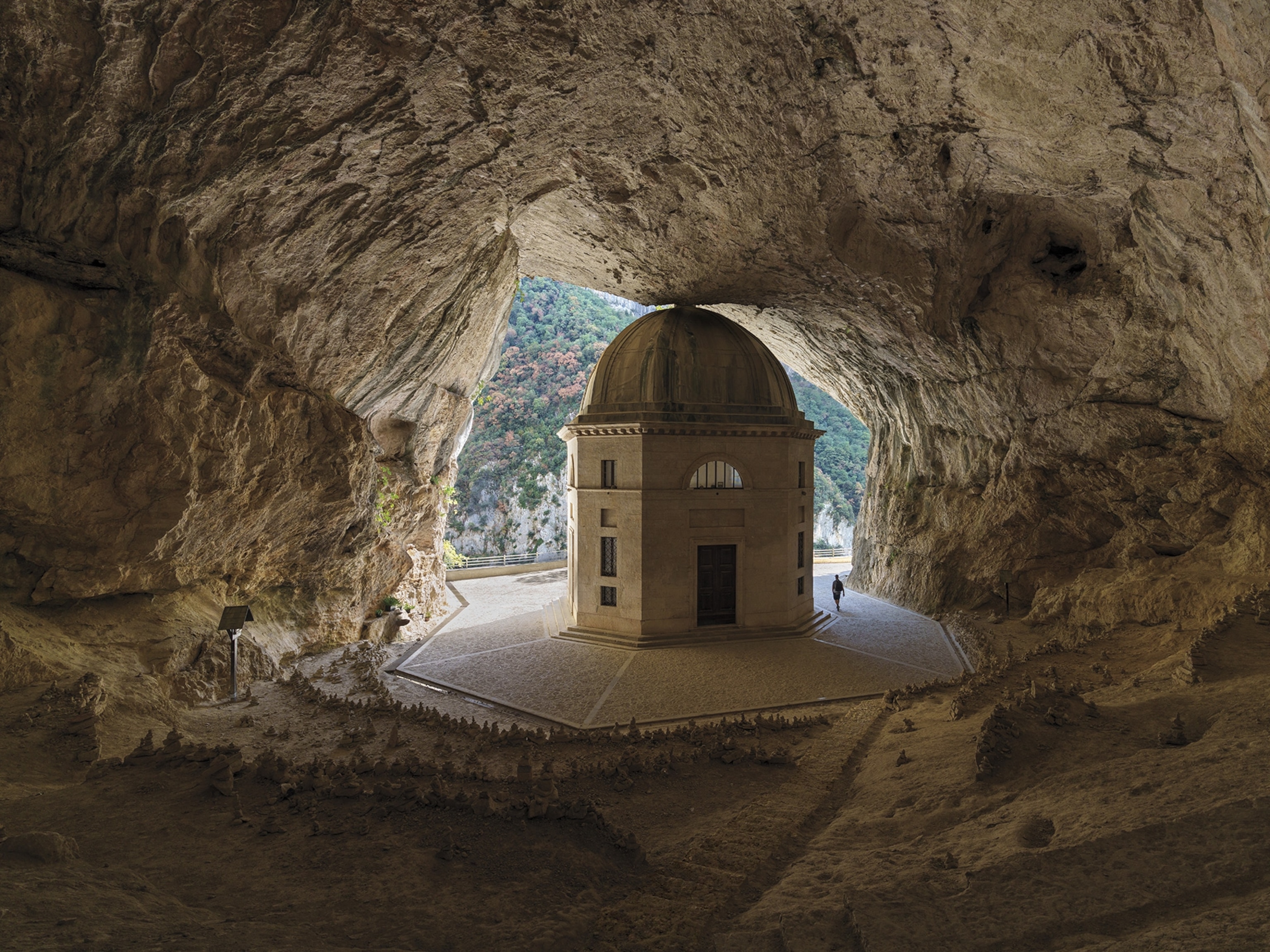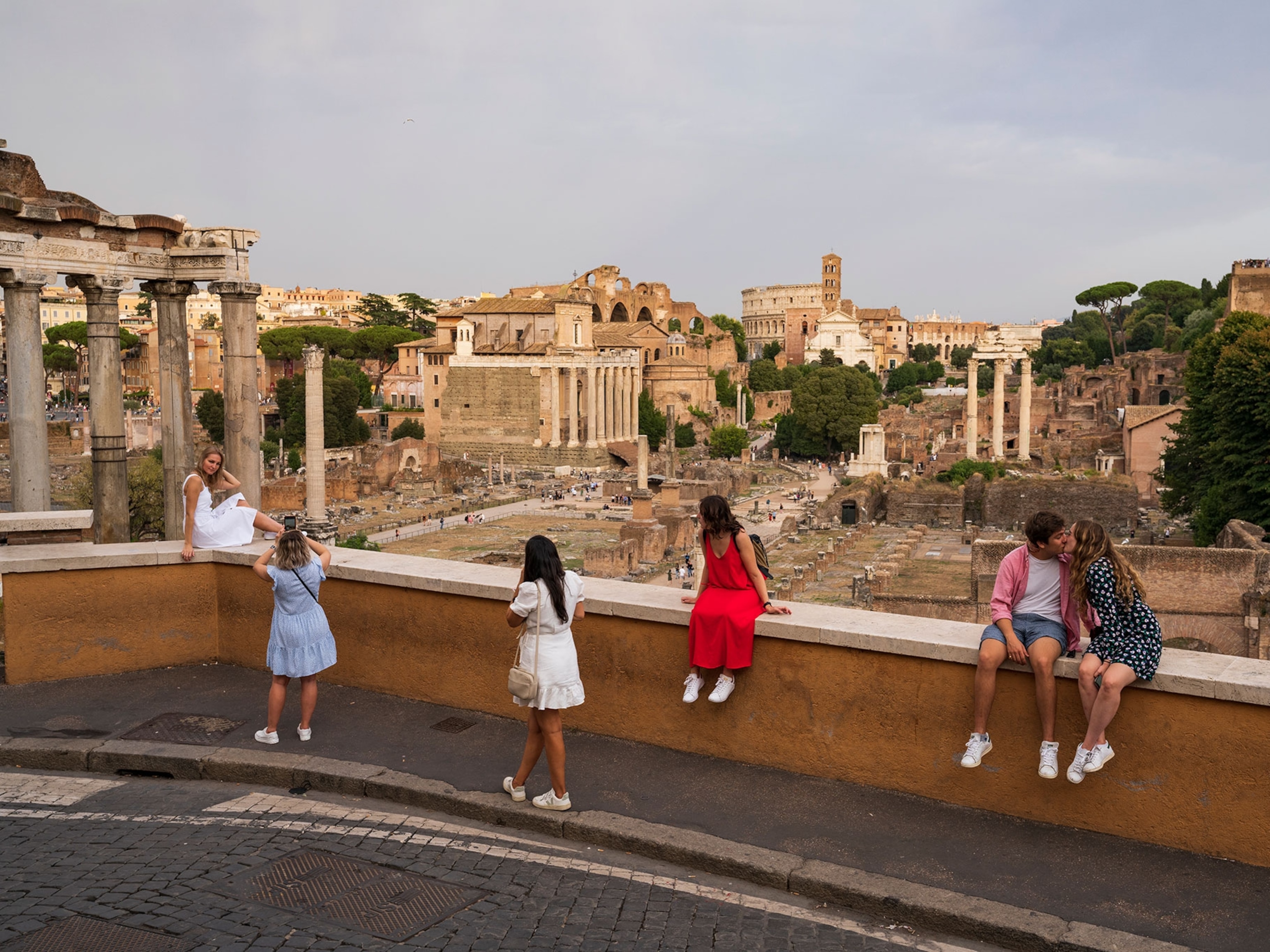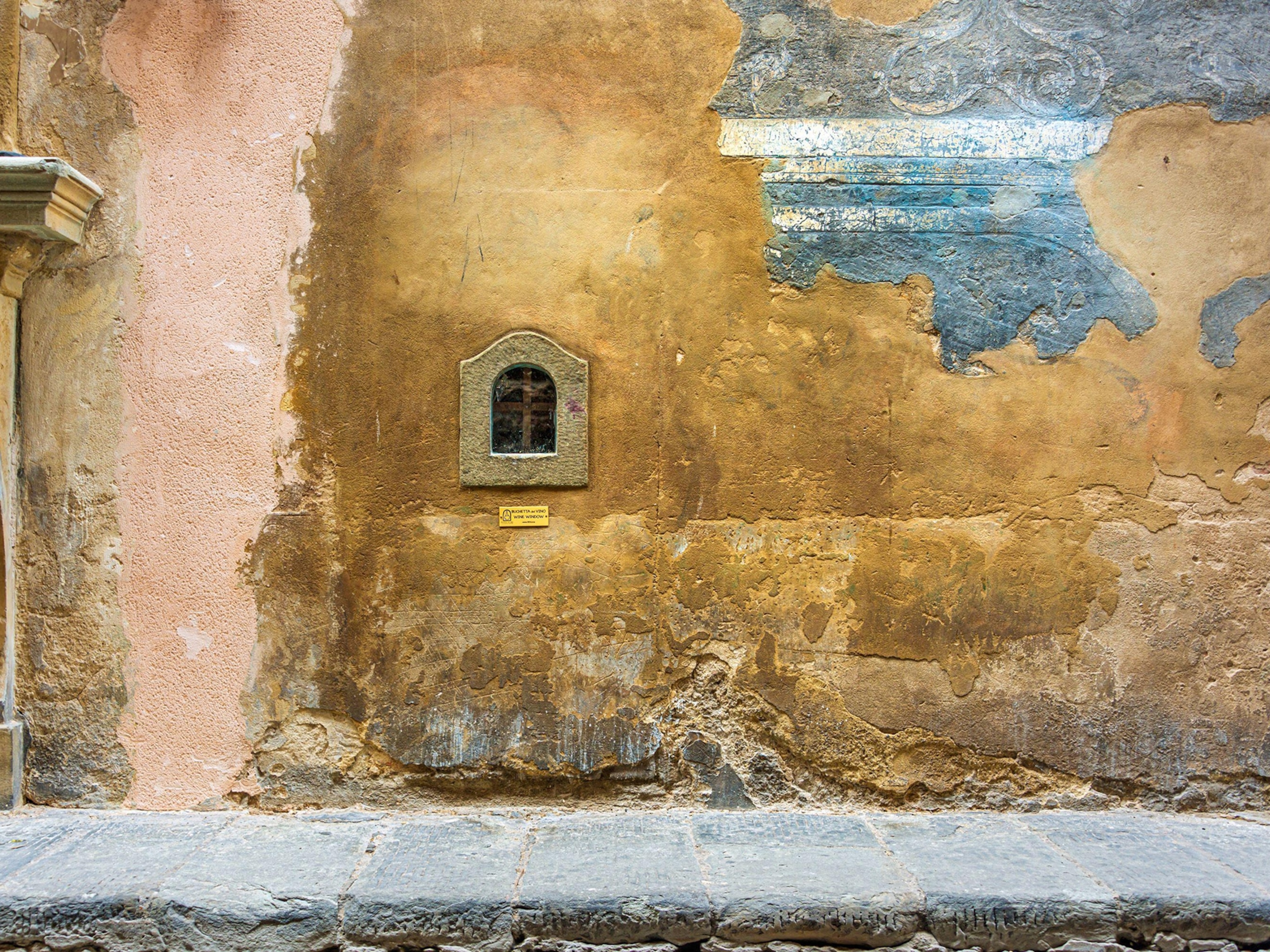These are the must-see sights of Italy’s Abruzzo region
From mountain-farmed food to wine that’s been perfected over 2,000 years, here’s how to get a taste of Abruzzo, central Italy’s wild, nature-filled region.
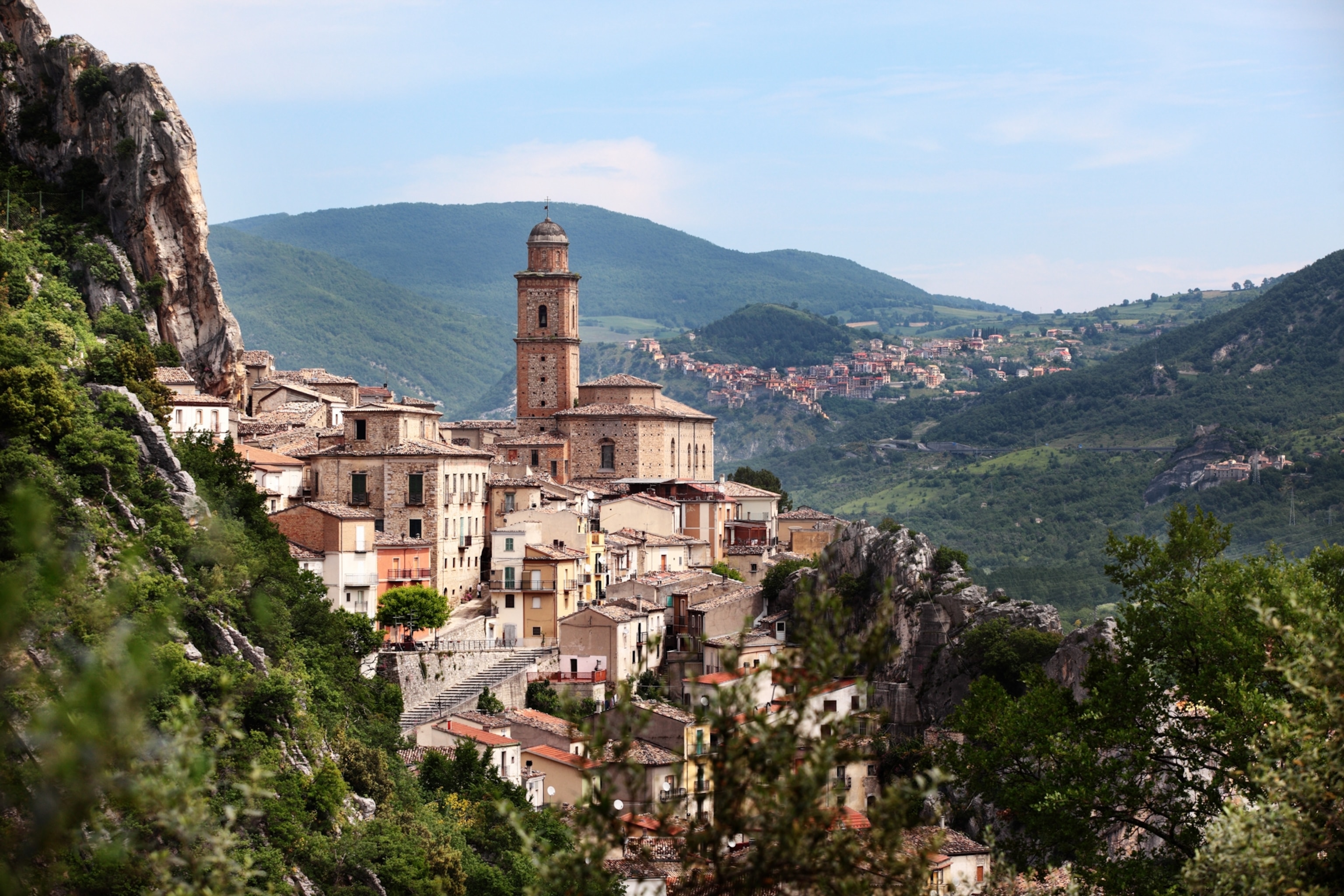
Think of Italy and you’ll imagine landscapes of rolling hills, jagged mountains, sinuous coastlines and, of course, world-class food and wine. Yet while visitors flood Tuscany, Veneto and even Cinque Terre, few think of Abruzzo. What most people don’t know is that this central region, level with Lazio but on the Adriatic Coast, is Italy in microcosm. Its mountainous hinterlands sink down into rolling hills, topped with Renaissance towns and plaited with vines, while the Adriatic Sea sparkles in the distance.
This wild territory—still home to bears and wolves in parts—is a place where nature rules. Earthquakes have leveled settlements throughout the centuries, but generation after generation of Abruzzesi have rebuilt, so strong are their ties to the land. Those deeply set roots make it the perfect place to experience an Italy far from the tourist mayhem: a place where food traditions are centuries-old, where mountain plants are magicked into feisty drinks, and where you can go from bear-spotting in the mountains to wine-tasting near the beach in a matter of hours. Here’s what not to miss in this region where the wilderness is never far away.

Visit L'Aquila, Abruzzo's sweet-toothed capital
In a wide, mountain-swaddled basin, Abruzzo’s regional capital, L’Aquila, enjoys one of Italy’s most extraordinary city settings. Although it was devastated by an earthquake in 2009, and signs of rebuilding are still ever-present, it’s an important visit for anyone wanting to understand Abruzzo and the tenacious character of Italy’s quake-prone central regions.
The city is home to important churches, including the Baroque Basilica di San Bernardino, swaggering over the historic center, and Romanesque-Gothic Santa Maria di Collemaggio, in parkland just outside. It’s also home to one of Italy’s most intriguing museums, MUNDA—where medieval wood sculptures, terracotta statues and Renaissance paintings are displayed in L’Aquila’s former slaughterhouse.
If you have a sweet tooth, L’Aquila is a must for another reason: Its famous torrone tenero al cioccolato, or soft chocolate nougat. Invented in the 19th century by the local Nurzia family, it’s a crumbling, mix of honey-soft nougat laced with chocolate and stuffed with crunchy hazelnuts. You can still taste it—as well as treats such as nougat-infused espresso—at the family’s turn-of-century bar on main square Piazza Duomo.
Taste the past in Santo Stefano di Sessanio
Forty minutes east of L’Aquila, the road sweeping up into soft, billowing mountains, is Santo Stefano di Sessanio, an ancient village huddled on a plateau that sometimes appears to hover above the clouds. Known for its wool production since Renaissance times, it’s one of countless rural Italian towns and villages that emptied out as residents emigrated for a better life in the 19th and early 20th centuries.
But it is now alive again, with many of the houses transformed into an albergo diffuso (scattered hotel), Sextantio. Owner Daniele Kihlgren and his team researched the village’s ethnographic history before resurrecting the properties, and restaurant Locanda Sotto gli Archi doubles as a repository of rural working-class food traditions. The menu is based on past village recipes, from pork neck smothered in a sweet fig sauce to giant ravioli, stuffed with local sheep ricotta and swirled in a sauce laced with saffron, cultivated in Abruzzo’s mountain highlands.
Try Abruzzo's (finally) world-renowned wine
Most visitors on a wine pilgrimage to Italy will head to Tuscany or Piedmont—but that may be changing. Abruzzo was named “region of the year” by Wine Enthusiast magazine in 2022 for its eclectic terroir, unspooling from the mountains towards the Adriatic Sea. It’s best known for its feisty Montepulciano (also called Montepulciano d’Abruzzo) reds and heady Cerasuolo rosés (made from the same grape), while its Pecorino white wine is also becoming increasingly popular.
In the north of the region, the rippling hills around Controguerra and Colonnella are like a mini-Tuscany, the undulating landscape threaded with vineyards. You can try wonderfully affordable wine at Biagi (try the Eklè sparkling rosé, surprisingly good with seafood), Illuminati (going strong since 1890) or Montori, the first vineyard to produce sparkling Trebbiano and Pecorino whites.
Abruzzo’s real wine hub lies in the Chieti province, inland from capital Pescara—known for its wine since Roman times, around 80 percent of the region’s vineyards are here. The Di Nunzio family have been producing wine for four generations at La Vinarte, and offer regular tastings as well as picnics amid the vines and atmospheric olive groves.
(Related: These are the must-see sights of Italy's Veneto region.)
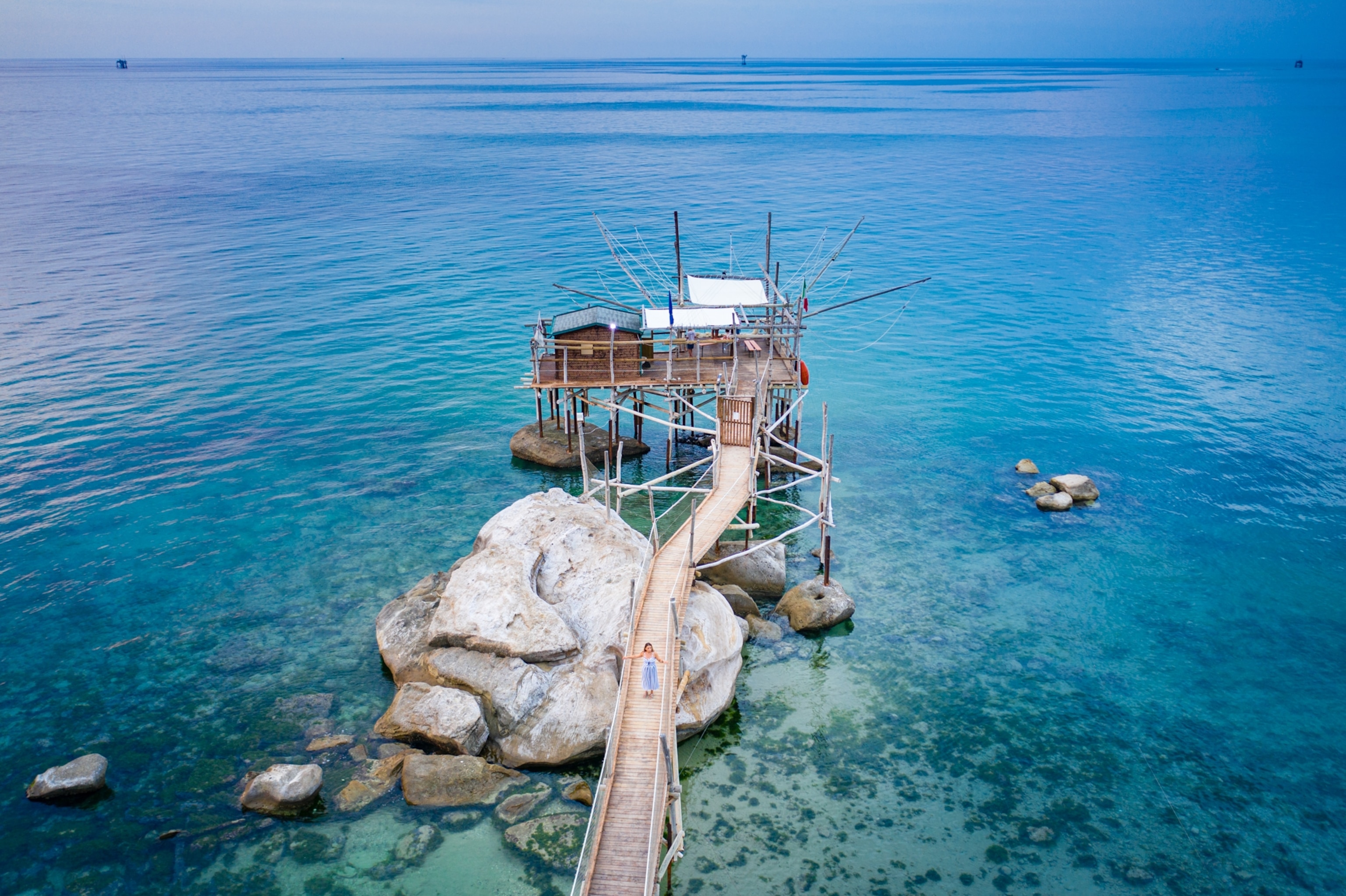
Roam the national parks
Roughly a third of Abruzzo’s territory is protected as national parks and nature reserves—drive around and it feels like the towns and villages are slotted discreetly into the pristine landscape. The territory here runs the gamut from mountainous (Parco Nazionale del Gran Sasso e Monti della Laga, which comprises no fewer than three mountain ranges) to the fauna-filled Parco Nazionale d’Abruzzo, Lazio e Molise.
Humans have long lived in harmony with nature here—Abruzzo’s famous cheeses and sheep dishes originated in the mountains, and at Campo Imperatore, a mountain plateau above L’Aquila, you’ll see cowboys driving their herds across the plains. Trekking company Camminare in Abruzzo offers a half-day trip that brings the two together: A two-hour hike through the Parco Nazionale della Maiella to an agriturismo and dairy farm where you’ll learn how to make cheese including cacio morra––the traditional cheese of shepherding families––made from sheep and goat’s milk.
Try a tipple of genziana
Forget after-dinner cocktails; in Abruzzo, meals are swilled down with a shot of genziana, a bitter but refreshing digestif made from the roots of the gentian flower, which grows in abundance on the mountainsides. You’ll find it in restaurants and bars across the region, but to try it properly, head to a producer.
In the hills outside the Silente-Velino nature reserve, south of L’Aquila, Liquorificio d’Abruzzo brews genziana as well as other liqueurs from Abruzzo herbs and roots. Visitors can visit the distillery and then taste the boozy wares—try the santoreggia liqueur, made from the thyme-like herb of the same name.
Eat cantilevered above the sea in a trabocco
The 24-mile crescent of coastline between Ortona and Vasto is named the Trabocchi Coast for its most famous residents: bizarre fishing platforms cantilevered over the boulder-filled waters. Gussied up with nets galore and levers for sinking them into the water, these spindly trabocchi look like spiders mid-spin of their webs. Local fishing families built them from the 1700s onwards to cast their nets beyond the rocky coastline; today, most families have converted them into atmospheric restaurants, where guests cross a rickety catwalk from the shore to eat the spoils of the sea as waves crash below and seagulls hover expectantly.
One of the loveliest is the fairy-lit Sasso della Cajana, where the Verì family serve up local dishes, from anchovies sprinkled with chilli flakes to pasta topped with the catch of the day. Work it off the next day with a walk or cycle along the biking path that runs the whole way along the Trabocchi Coast.
(Related: 7 must-do experiences in Italy's stunning Lombardy region.)
See some of Europe's last bears
Europe’s bear populations have almost all been extinguished, but some of the continent’s last remaining animals live in Abruzzo’s vast stretches of mountain wilderness. There are around 50 Marsican brown bears living in the Parco Nazionale d’Abruzzo, Lazio e Molise—the national park straddling three Italian regions. The Abruzzo side is the best place to have a chance of seeing them.
Wildlife Adventures, a local operator which has led rewilding projects in the area, leads bear-watching trips from April to September; to really get off beaten paths, they also offer a five-night Italy’s Big Five trek, taking in mountain villages and jawdropper landscapes as well as tracking the bears, wolves, boar, deer and Apennine chamois.
Step back in time in genteel Vasto
Perched on a hillside overlooking the Adriatic Sea, Vasto was the Renaissance-era seat of the d’Avalos family, whose fiefdom sprawled over much of southern Italy. Today, it’s still a stately town, with echoes of the family at every turn. Palazzo d’Avalos, their former stronghold, now houses the city’s museums. The cloister and Neapolitan-style gardens with their sweeping views whisk you back to the time of Vittoria Colonna, one of the Renaissance period’s most famous poets and the muse of Michelangelo, who spent time here when she married into the family.
Aside from its one-time celebrities, Vasto is also famous for its food. Brodetto alla Vastese is a fish soup which pairs seafood broth with bell peppers, onions garlic and tomatoes. Try it at Cibo Matto in the town center, or at Ristorante Da Micchele down at sea level near the port.
Buy a bouquet of Sulmona's sugared almonds
An hour southwest of Pescara, mountain-wrapped Sulmona has ancient history—Roman poet Ovid was born here. His fellow Romans are thought to have invented Sulmona’s most famous product: confetti, or sugared almonds, which was taken to new heights by the town’s medieval nuns. The 15th-century residents of the Santa Chiara convent started making fantastical ‘flowers’, ‘fruits’, and even sweet rosaries with their simple sugared almonds, and today, the town is home to myriad shops selling concoctions in the shape of multicolored flowers, where each petal and stigma is a single sugared almond. You’ll learn the history of the treat at the Museo dell’Arte e della Tecnologia Confettiera, better known as the Pelino Confetti Museum—a private museum owned by one local producer which has been making the treat since 1783.
Sulmona’s other medieval masterpiece is its extraordinary, still-working aqueduct, which has been swishing fresh water through the center of town since 1256. Fill up at the Renaissance-built Fontana del Vecchio fountain when the sugar load gets too much.
Snack on arrosticini, abruzzese 'kababs'
One of Italy’s finest street foods originated in the mountains of Abruzzo: arrosticini, chunks of sheep meat stuck on skewers, alternated with little fatty chunks and grilled over coal to sizzling perfection. Sold by the handful, you’ll find them all over the region, with arrosticini food trucks hovering near the entrances of national parks. For a sit-down experience, try them at Ristorante Il Fungarolo, a mountain lodge and restaurant that specializes in hearty mushrooms, truffles and meat from the mountains beneath whose ragged peaks it sits.
Getting Around
Abruzzo isn’t simple to reach—Pescara airport only sees budget airlines on European routes. It’s easiest to fly to Rome or Naples, both a three-hour drive away. Trains from Rome take a minimum of three-and-a-half hours to either Pescara or L’Aquila (for once, Trenitalia’s slower regional trains have direct, faster routes). There’s a picturesque train line down the Trabocchi Coast, from Pescara to Vasto, but otherwise renting a car is a must.
Where to Stay
Sextantio Santo Stefano di Sessanio is the ideal introduction to Abruzzo. Hoisted high in the mountains, between L’Aquila and Campo Imperatore, its rooms carved out of long-abandoned houses and lovingly prepared menus are an immersion into the region’s long-held traditions.
Wine-lovers can sleep immersed in nature at Tema Relais, part of Tenuta Masciangelo, which produces high-quality wine and olive oil, between the Maiella National Park and the beaches of Francavilla al Mare.
For a food-themed week, there’s Palazzo Tour d’Eau, a 17th-century mansion located on a hilltop in Carunchio. Most guests are stay here for the six-day gastro-tours of the region, with cooking classes at the inhouse school, Abruzzo Cibus.
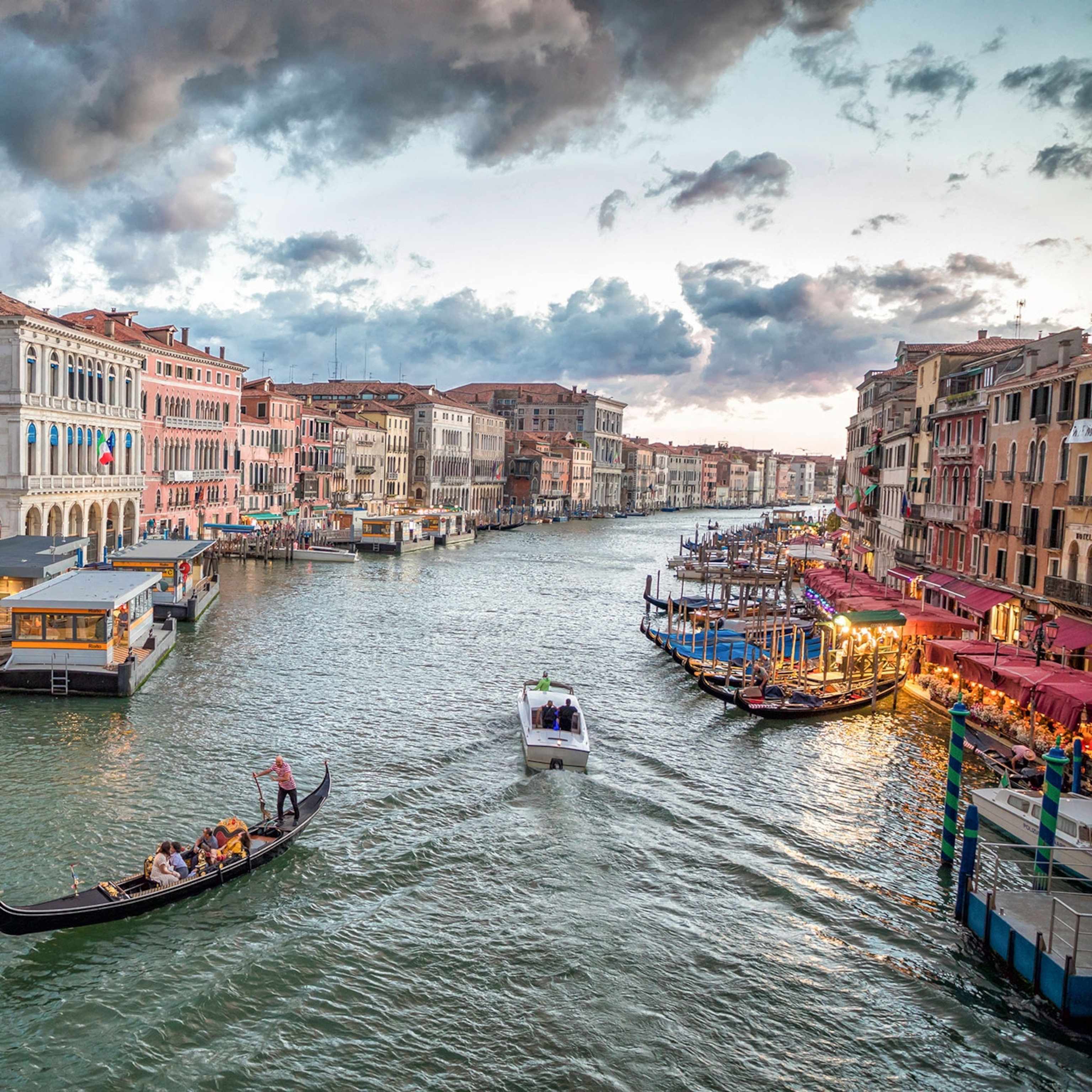
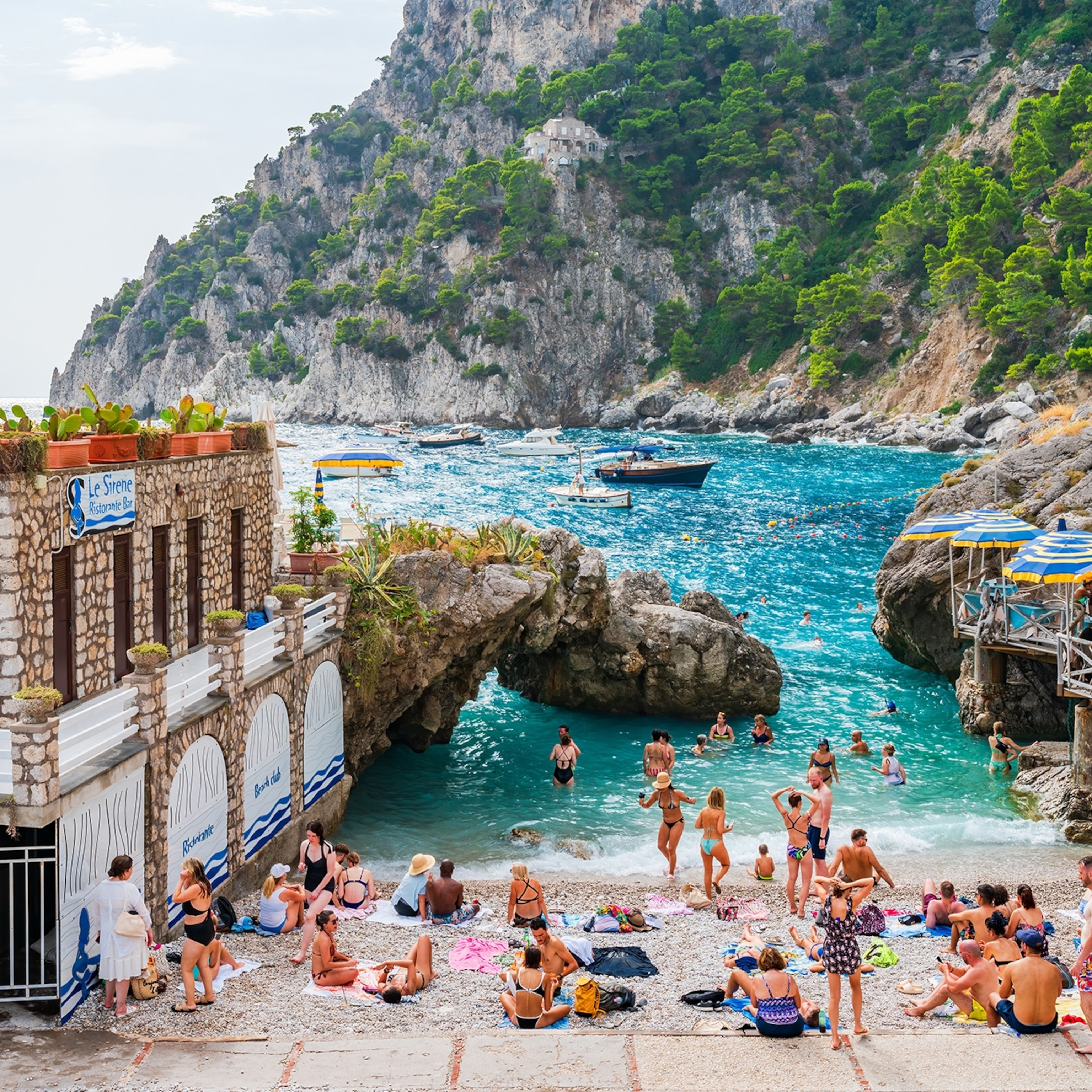

_4x3.jpg)
